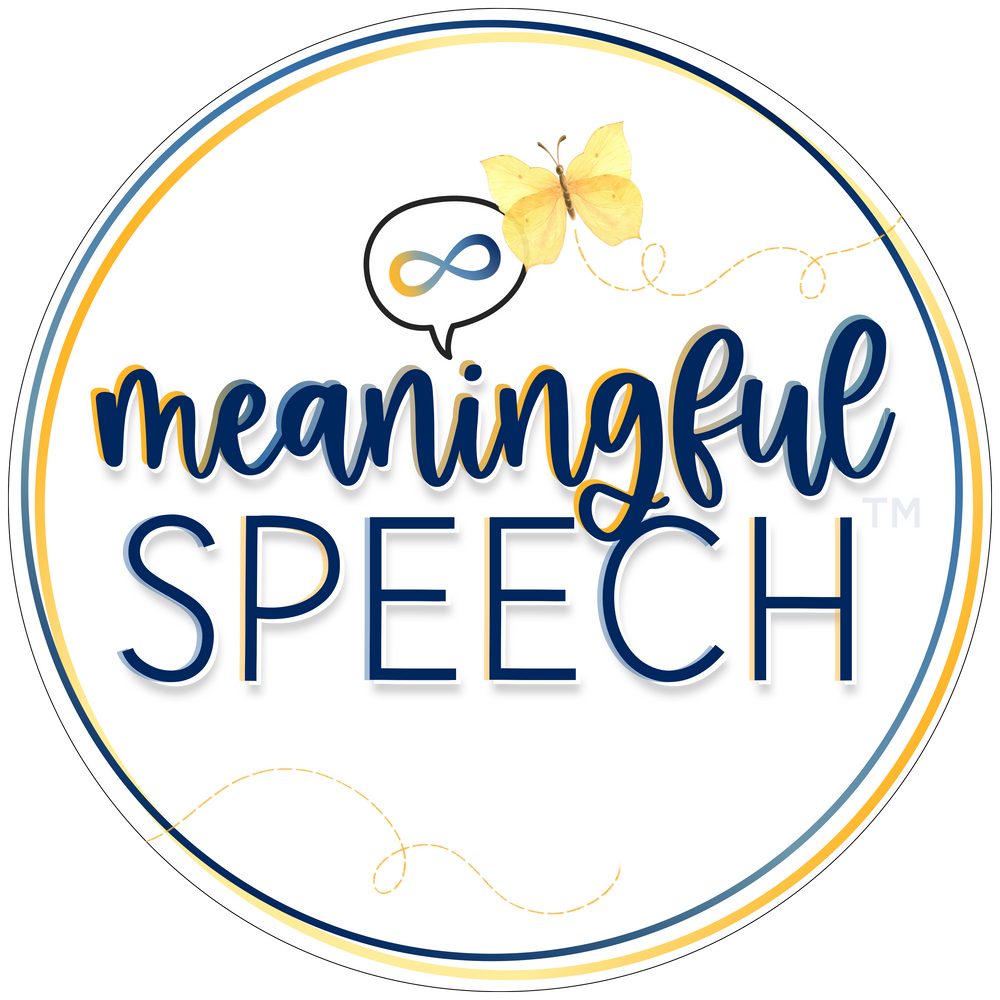Variety in Stage 1 of Gestalt Language Development
Jan 24, 2024
When gestalt language processors are in stage 1, they do not all sound the same. There is a variety across this first stage, and you may see some or all of these various characteristics of this stage in the children you support. Knowing the variety you might see is helpful in identifying gestalt language processors. However, we support Stage 1 gestalt language processors the same regardless. We acknowledge, investigate and model. The goal for stage 1 GLPs is to increase the amount and variety of mitigable gestalts the child is using spontaneously to communicate.
Stage 1 of gestalt language development might …
- Have a few, some or hundreds of single words. "Most gestalt language processors will take whatever language we give them." -Marge Blanc. They will take it, memorize it and say it BUT that doesn't mean it supports their language development. Many gestalt language processors have a few, several, or hundreds of "stuck" single words.
- For example: If they learned "dog" from having a pet OR seeing a flashcard it is still the intonation and meaningful first experience that makes it a gestalt for them. It is a "stand alone" unit to them. They may label "dog" when they see one BUT they won't begin to say "big dog" or "black dog" in stage 1 because the "dog" gestalt can't be combined and is NOT being processed as a true single word.
- Be unintelligible. You’re unable to understand what the child is saying some of or most of the time but they are using rich intonation. It may sound like jargon. Gestalt language processors are referred to as "intonation babies." They tune into the intonation and melody of the gestalts they pick up. These chunks of language represent one meaning, often tied to an experience. In stage 1, they do not tune into or recognize the single words within these chunks of language as units of meaning and are not yet concerned about the sounds within those words and how they're produced. As they progress through the stages of gestalt language development, they begin to recognize these single words within the gestalts. As this happens, gestalt language processors often become more intelligible.
- Use lines from media or use what they have heard other people say verbatim. The child uses lines from shows, movies, songs, or people around them to communicate.
- Example #1: When a child falls down, their mother asks, “are you okay?”. The child picks this up as a gestalt. The next time the child gets hurt, they say “are you okay?” to communicate that they are hurt.
- Example #2: The child is watching their favorite superhero movie and they hear the line “up, up and away!”. They pick this up as a gestalt and use it anytime they want to communicate that they want to leave the place they are in or end an activity.
What can you do to support gestalt language processors in Stage 1 of gestalt language development?
-
Acknowledge all communication by smiling, head nodding, saying "Yea" or "Okay" or repeating what they said (if you can and it’s appropriate).
-
Investigate. Try to figure out what the gestalt means to them. They are rarely literal. Ask parents or go back to the original source (e.g. media).
-
Model what you think the child wants to say. You may not get it right and you may need to try a few times. When you do you will know! They will smile or give you eye contact or repeat what you said - the words they wanted!
-
Focus on modeling natural, everyday, declarative language. Get creative with intonation and get in touch with your musical side if you can. Take the focus off of questions and prompts and fully eliminate them if possible. Remember, an early stage GLP will take in and use the language they hear (for many GLPs the more melodic, the more dramatic the more it might “stick” for them).
Want to learn more in-depth information about how to support gestalt language processors?
1. There are many free podcasts, webinars and articles to get you started. A comprehensive list of resources can also be found on our website.
2. Consider taking the Meaningful Speech course to learn more about how your child or client processes language, how you can help support them from echolalia to self-generated (original flexible) language, child-led therapy, and neurodiversity-affirming practices. Looking for something shorter? We have a 1-hour introductory course perfect for extended family, daycare or school staff.
3. Consider taking our AAC + Gestalt Language Processing course. It will teach you how to identify, evaluate and support gestalt language processors who use AAC or who you think might benefit from AAC.
4. Look for a speech-language pathologist (SLP) who "gets it" and can help you in supporting your child's language development. Check out our registry for SLPs who understand gestalt language processing and child-led therapy.
5. Are you a school-based or private practice clinician looking for intake forms for new clients/students or creative visual reminder posters for your space? Check out the Meaningful Speech Marketplace.
